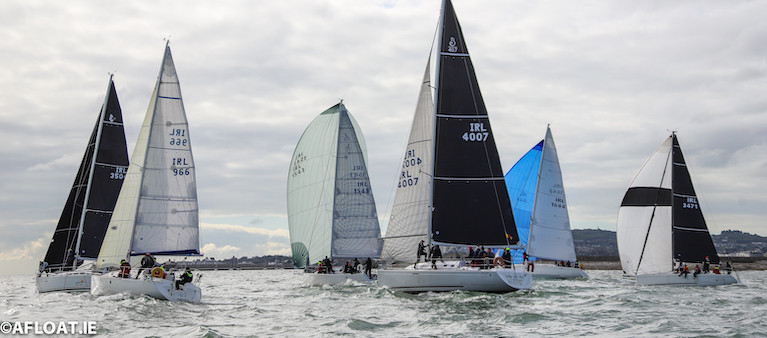Two of 2021's early-season cruiser-racer sailing fixtures on Dublin Bay are up in the air due to January's lockdown restrictions.
A new ISORA 'Early Season Series' originally planned for this month was to continue the offshore's body's successful 2020 coastal racing out of Dun Laoghaire Harbour. However, the current lockdown has put paid to those plans, leaving ISORA boss Peter Ryan to reschedule.
"We had planned for January but that's not going to happen. So, rather than cancel, we will reschedule those races into a potentially tighter programme as soon as possible", Ryan told Afloat.
The 2020 ISORA Coastal Series attracted a dozen or more entries and typically involved a race using virtual marks along the County Dublin and Wicklow coasts.
Ryan's offshore enterprise won him an end of the year gong. The NYC sailor took an Afloat Sailor of the Month Award in December for his success in staging an ISORA series in lockdown in 2020.
DBSC Spring Chicken
Meanwhile, following the total abandonment of its popular Turkey Shoot pre-Christmas event, the hope is that Dublin Bay Sailing Club will be in a position to run its Spring Chicken Series that starts traditionally in the first week of February.
The series of six races are held on Sunday mornings and organised by DBSC attracting as many as 40 boats.
However, as COVID lockdown restrictions are set to continue nationally until January 30th, fears are that there is now every chance that restrictions could also impact DBSC's spring fixture too.
The popular Spring Chicken format features short, sharp races typically of around one hour in duration.
In a new year announcement, DBSC was named as 2021 Sailing Club of the Year for its achievements in keeping sailing going on Dublin Bay during the lockdown in 2020.

























